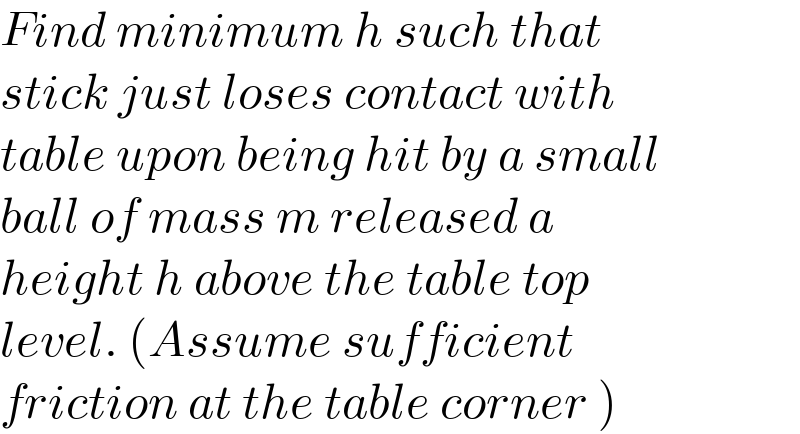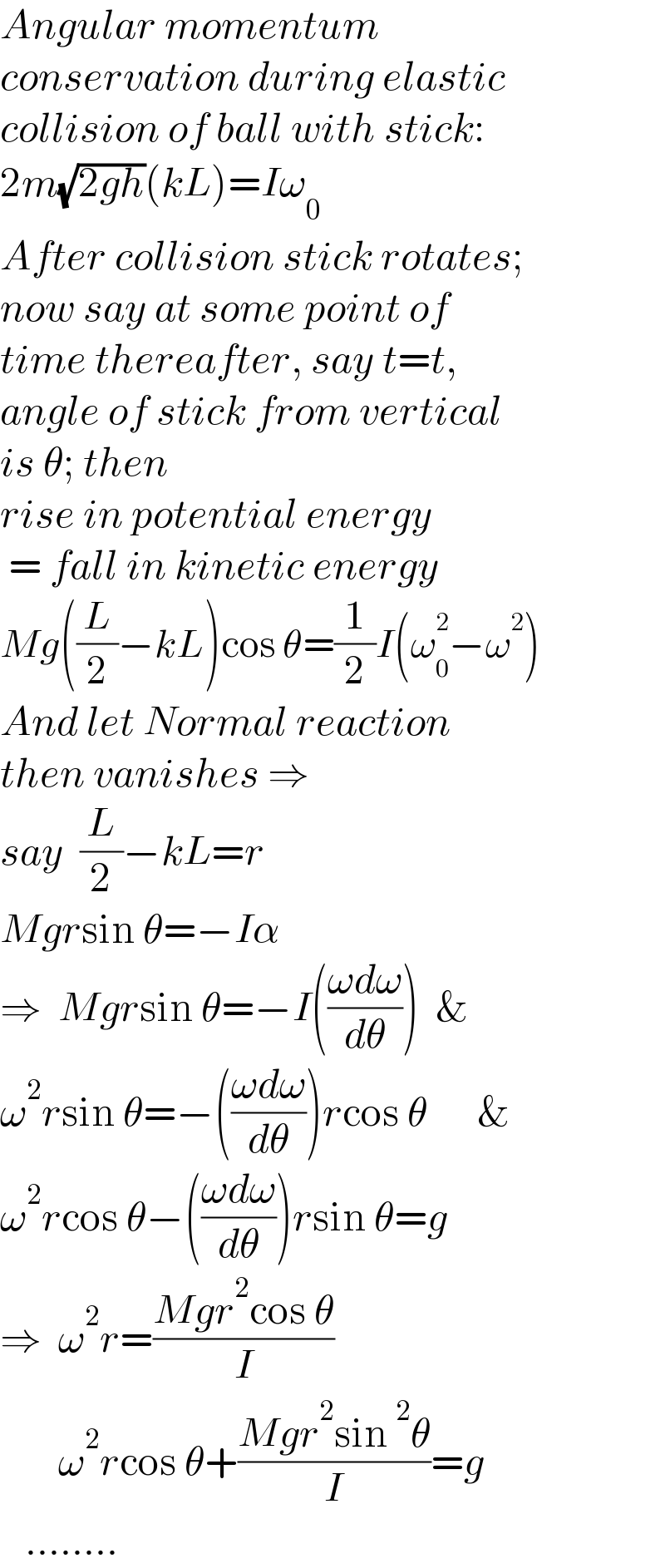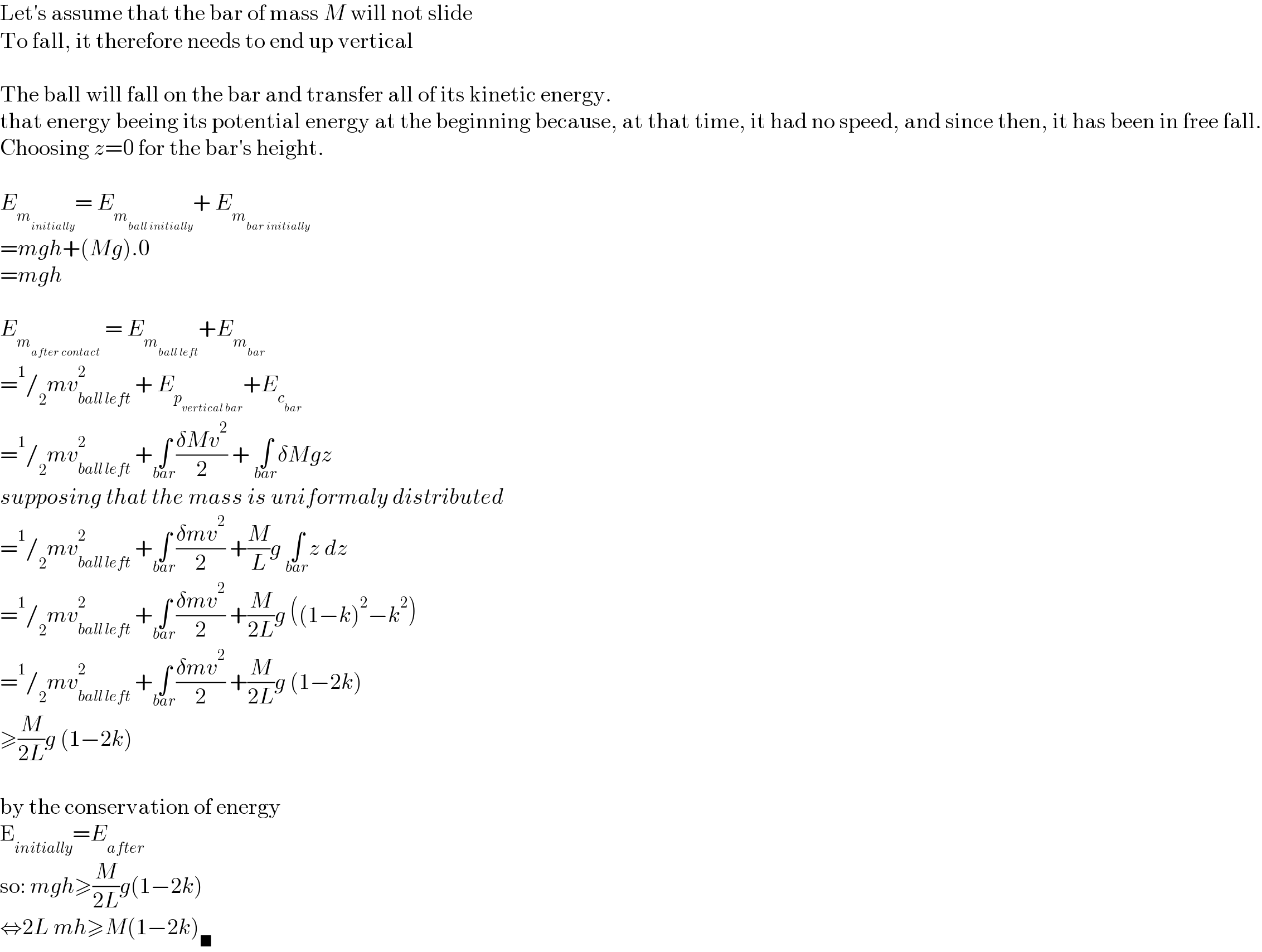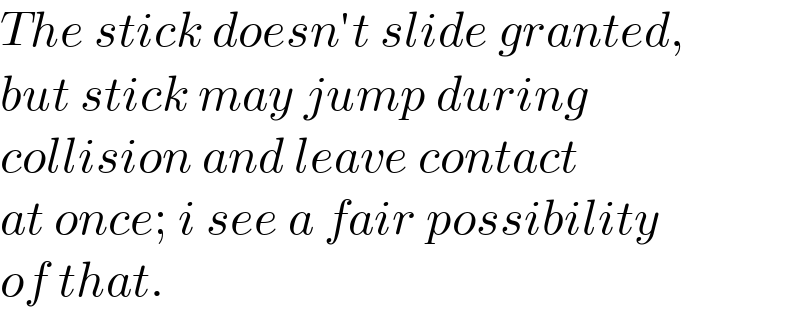
Question and Answers Forum
Question Number 143868 by ajfour last updated on 19/Jun/21

Commented by ajfour last updated on 19/Jun/21

Answered by ajfour last updated on 21/Jun/21

Answered by TheHoneyCat last updated on 21/Jun/21

Commented by TheHoneyCat last updated on 21/Jun/21

Commented by ajfour last updated on 21/Jun/21

